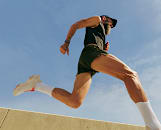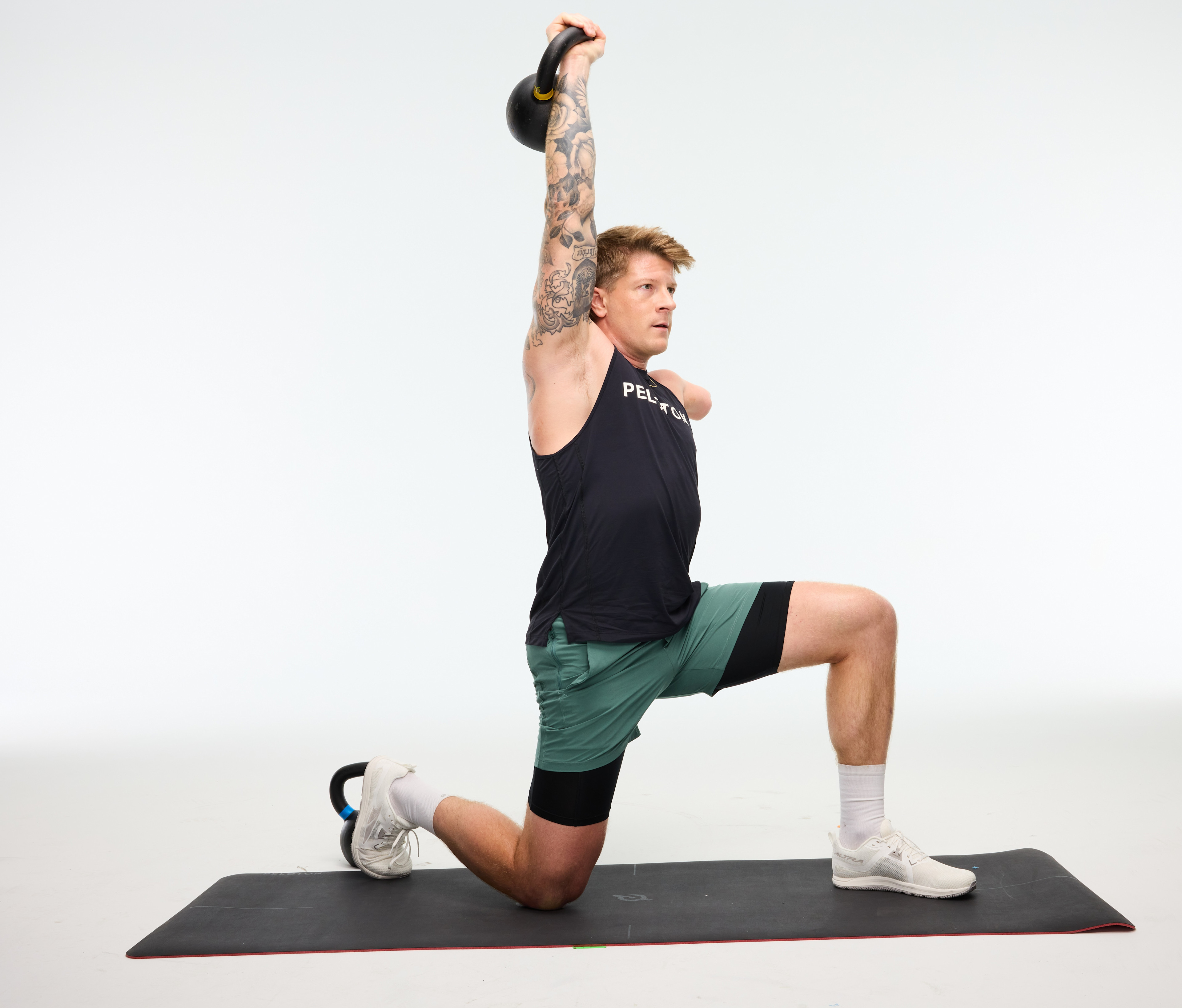
The Kettlebell Snatch Is a One-Stop Shop for Cardio and Total-Body Strength. Here’s How to Do It
Get ready to tap into your power.
By Amber Sayer•
What Are Kettlebell Snatches?
The Key Benefits of Kettlebell Snatches
Which Muscles Are Worked By Kettlebell Snatches?
How to Do a Kettlebell Snatch with Proper Form
Mistakes to Avoid When Doing Kettlebell Snatches
Kettlebell Snatch Modifications
Are Kettlebell Snatches Suited for Beginners?
The Takeaway
Are you looking to amp up your strength training routine with powerful, effective moves? If so, the kettlebell snatch might be just the ticket to take a humdrum weightlifting workout to the next level.
Discover more ways to reach your goals with Peloton
The kettlebell snatch is a dynamic, full-body exercise that builds power and strength while offering metabolic conditioning, but it’s not exactly the easiest to master.
Keep reading to learn more about how to do kettlebell snatches with proper form and the benefits of this explosive movement, thanks to Peloton Instructor Logan Aldridge and Andy Fata-Chan, a physical therapist at Moment Physical Therapy & Performance. By the time you’re done, there’s a good chance you’ll be pumped about the idea of adding kettlebell snatches to your routine.
What Are Kettlebell Snatches?
Kettlebell snatches are an advanced yet approachable take on a classic Olympic lift, the barbell snatch. Using a single kettlebell (the weighted implement that has a heavy bell or ball at the base and then a looped handle that bridges over the top), this exercise involves hoisting the weight from the floor up in front of the body until it’s punched up overhead.
The movement combines elements of the single-arm kettlebell swing, clean, and press into one fluid, explosive motion, making it a fantastic metabolic, cardiovascular, strength, and power exercise in one.

Peloton App
Access thousands of classes with no equipment needed.
The Key Benefits of Kettlebell Snatches
Kettlebell snatches are a “total-body powerhouse move,” according to Logan, and offer a host of benefits when you add them to your workout routine. “They build strength, boost cardiovascular endurance, and improve power and coordination,” he explains. “You’re getting a killer combo of explosive hip drive and upper-body stability, all while torching calories.”
He describes the kettlebell snatch as functional fitness at its finest. What, exactly, does that mean? Functional exercises are those that mimic everyday movement patterns, so they both strengthen and prepare your body in ways that translate to the way you naturally move your body outside of the gym.
For example, kettlebell snatches serve as a fantastic functional exercise because they train you to use your whole body to efficiently lift something from the floor to overhead, which you might need to do when placing a storage bin on a high shelf or shoving your carry-on suitcase in the overhead bin on an airplane. “Think: Picking up groceries or hoisting a bag overhead,” Logan adds. “Plus, it’s a great way to challenge your mental toughness and keep your workouts dynamic.”
Another key benefit of the kettlebell snatch is that it improves your ability to produce power in the lower and upper body, Fata-Chan adds. “It also exposes your shoulder to higher velocities, which can help prepare you for activities such as throwing or boxing,” he says.
Which Muscles Are Worked By Kettlebell Snatches?
The kettlebell snatch exercise works nearly every muscle group in your body, Logan says. “In the swing phase, it’s all lower body and core; the pull phase recruits your back and arms; and the catch locks in your shoulders and core for stability,” he explains. “It’s a symphony of movement!”
Here’s the breakdown of the muscles worked by snatches with a kettlebell:
Glutes and Hamstrings: Logan says the glutes and hamstrings are the main muscle groups that provide power for kettlebell snatches. “These fire up during the initial hip hinge and explosive drive to launch the kettlebell upward,” he explains.
Quads: The quads, which are the muscles on the front of your thighs, assist in extending your legs as you snap your hips forward.
Core: When you perform kettlebell snatches with proper technique, your core muscles should be engaged throughout the entire movement to stabilize your spine and transfer force from your lower body to your upper body.
Lower Back: The lower back extensors keep your torso upright and strong during the swing and catch.
Shoulders: The shoulder muscles (aka the deltoids) and the rotator cuff muscles guide the kettlebell overhead and help stabilize the load as you catch it at the top, Fata-Chan says.
Traps and Upper Back: Your trapezius muscles, better known as the traps, are big triangular muscles that begin just below your skull and extend across the back of your shoulders, down to the mid-back. “These kick in to control the pull and lockout phase,” Logan says.
Forearms and Grip Muscles: You engage all of the grip strength muscles with kettlebell snatches because you have to grip the kettlebell hard, especially in the catch.
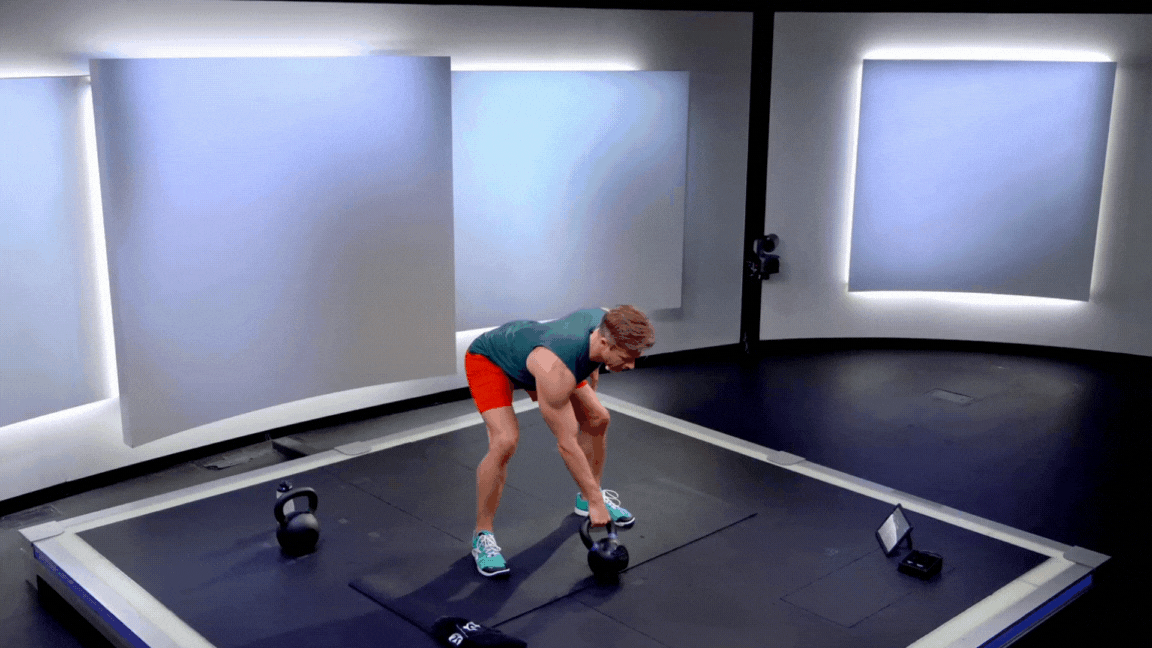
How to Do a Kettlebell Snatch with Proper Form
Here’s exactly how to do a kettlebell snatch with correct form, according to Logan and Fata-Chan.
1. Get Set Up
Start standing with your feet slightly wider than shoulder-width distance apart. Extend your left arm out to the side to serve as a counterbalance. (You’ll be using the other arm to grip the kettlebell.) Set a kettlebell on the floor about a few inches in front of your feet.
2. Start with a Squat
Keep your core engaged and back straight as you hinge at your hips and squat down to grip the kettlebell in the center of the handle with your right hand. Tilt the bell toward you.
3. Hike the Kettlebell Backward
Keeping your knees, hips, and torso in the same position, swing the bell backward between your legs until your right forearm touches your thigh.
4. Explode
Let the bell swing back down and forward, then explode through your feet and extend through your knees and hips, straighten your legs by powerfully driving your feet into the ground like you’re pushing the earth down (think: explosive leg press) to propel the bell upward.
5. High Pull and Punch Overhead
As the kettlebell passes hip height, bend your elbow to pull the bell closer to you, keeping your elbow close to your side, then rapidly extend your arm upward as you guide the kettlebell overhead. You can allow the kettlebell to flip over the top of your hand (as demonstrated above by Peloton instructor Andy Speer) or rotate your wrist forward as you punch your hand overhead.
At the top of the movement, your palm should be facing forward, and your hand should be stacked directly over your shoulder. Keep your core engaged; think about closing your ribs and avoid arching your back.
Keep in mind that the first part of the motion is like a kettlebell swing, and then as the bell travels up from your chest toward the ceiling, the motion should be as vertical as possible.
5. Control the Descent
Rotate your wrist and bend your elbow to allow the kettlebell to naturally arc back downward toward the gap between your legs on the descent. Allow momentum to carry the kettlebell through the space between your legs. From here, you can reverse the hike movement and place the bell back on the floor in front of you (shown above) or swing the kettlebell forward to begin another rep (shown below).
In terms of breathing, Logan says you should exhale on the upward drive and inhale on the way down. Keep your gaze forward and neck long; don’t lift your head to look up at the bottom of the swing, and don’t look back or up at the kettlebell at the bottom or top of the snatch.
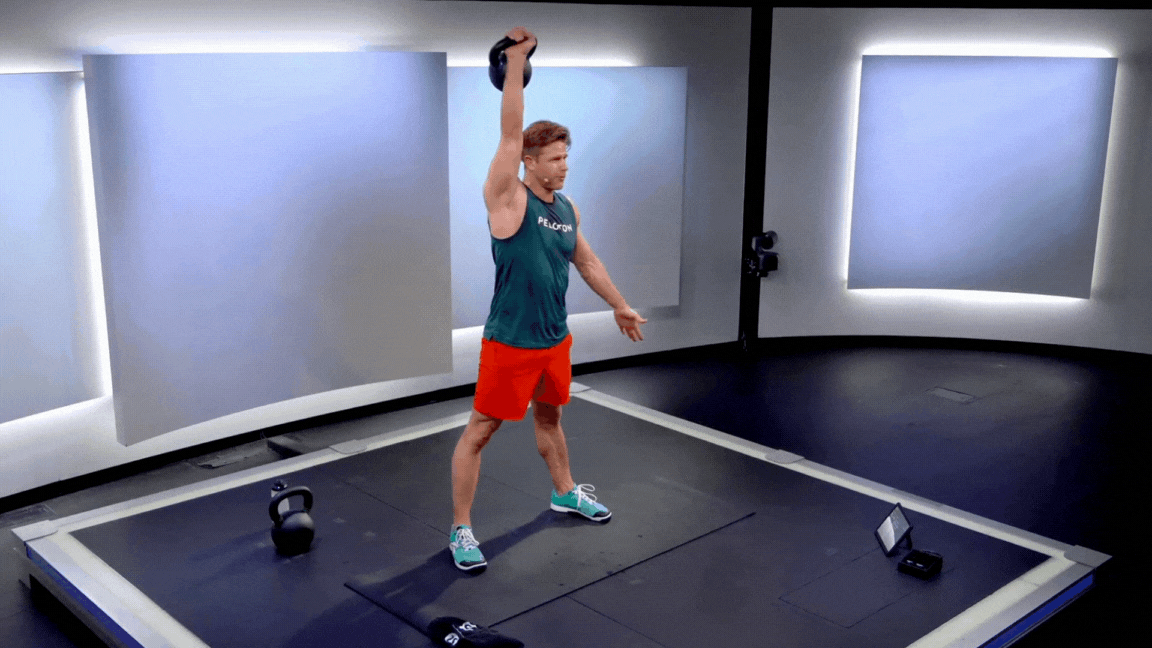
Mistakes to Avoid When Doing Kettlebell Snatches
It might be clear from the breakdown above, but there’s a lot going on during a kettlebell snatch. Here are some of the most common kettlebell snatch mistakes, according to Logan. While it might take some trial and error to learn proper form, it’s important to be cognizant of these issues and avoid them whenever possible to avoid injury.
Overusing the Arms: “Don’t muscle it up with your shoulder—let your hips do the heavy lifting,” Logan says. Drive your feet into the ground and hips up, and allow momentum to carry the bell upward.
Poor Timing: “Flipping the bell too early or too late can bang up your wrist,” Logan says. “Aim for a smooth transition as it passes chest height.”
Rounding the Back: Keep your spine neutral, core engaged, and chest proud—no hunching, Logan says. This is especially important at the bottom of the swing, or when you’re placing the bell back on the floor.
Not Fully Extending: “Half-hearted hip snaps mean less power,” Logan says. “Drive through fully.” That’s going to be key to getting the kettlebell to the top.
Rushing the Catch: “Dropping into the lockout without control risks shoulder strain,” Logan says. “Own that top position.”
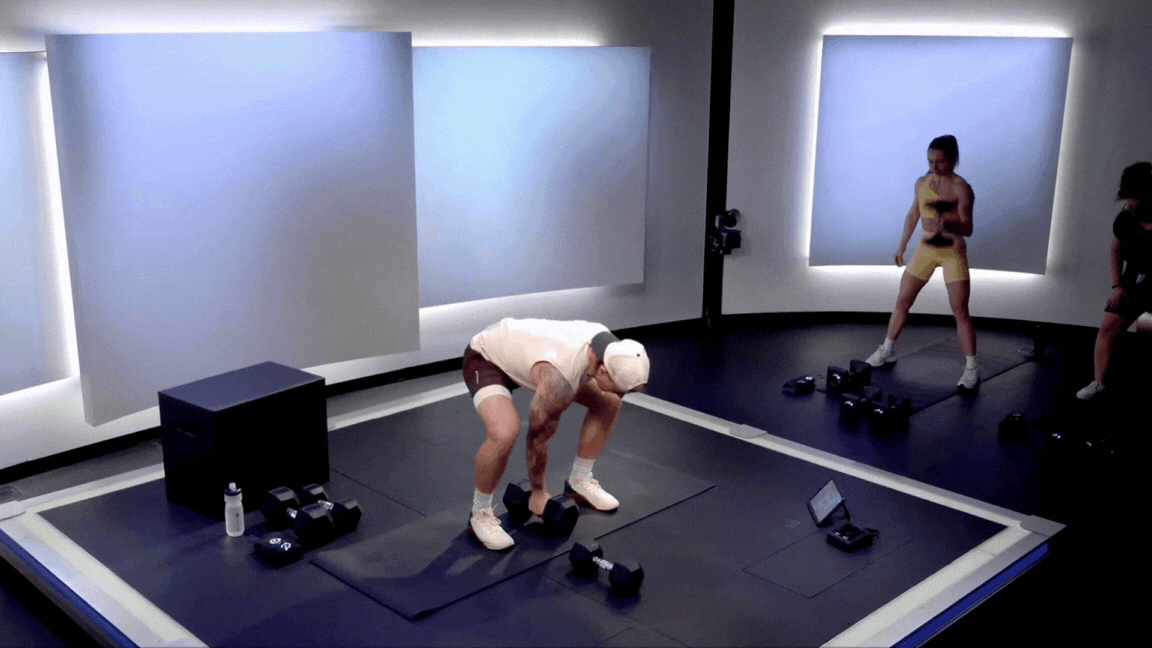
Kettlebell Snatch Modifications
The kettlebell snatch isn’t a straightforward or easy strength exercise, but you can work up to it by building your strength and skills with other moves and drills first. Below, Logan and Fata-Chan shared a few of their favorite modifications for beginners to progress toward kettlebell snatches safely and easily.
Dumbbell Snatch: If you’re new to snatching, you may find dumbbell snatches (demonstrated above by Logan) to be a little easier than kettlebell snatches because it’s a slightly less complex movement. “The dumbbell snatch will use less momentum since kettlebell snatches are done with a hike-back,” Fata-Chan explains. “The hike-back forces you to control the kettlebell as it is projected horizontally and redirect it vertically.” The dumbbell snatch, on the other hand, stays in a vertical plane of motion.
Single-Arm Kettlebell Swing: Because snatches are like juiced-up single-arm swings, it’ll help to master this move first.
Kettlebell High Pull: Instead of doing a full snatch and ending with the weight above your head, try a kettlebell high pull: Hike the kettlebell backward, then allow it to arc forward and up, pulling your elbow backward at shoulder height. Then, let it float back down. This lets you practice the hip drive without worrying about the overhead portion.
Single-Arm Swing to Partial Snatch. “Swing it up, guide it halfway overhead, then lower it,” advises Logan.
When you’re ready to try snatches in all their glory, Logan suggests starting with a lighter weight, like a 10–15 pound kettlebell. This will allow you to focus on your form and technique. As he says, “It’s all about building confidence and consistency before going full send.”
Fata-Chan also recommends tapping a qualified fitness professional for help, if you’re able. “Getting coached by somebody who's certified in kettlebell training can help you save a lot of time and frustration,” he says.
Related Articles

Strength Train
The 9 Best Kettlebell Exercises for Stronger Arms

Strength Train
Explosiveness Isn’t Just For Athletes. Boost Yours With These 6 Moves for Speed and Power

Strength Train
How to Master the Kettlebell Swing, the King of Kettlebell Exercises

Strength Train
10 Weighted Core Exercises That’ll Challenge Your Abs In a Whole New Way
Are Kettlebell Snatches Suited for Beginners?
Let’s call a spade a spade: kettlebell snatches aren’t easy to learn or perform. That said, “while they’re not the first move I’d throw at a beginner, they’re absolutely learnable with the right progression,” Logan says.
What does this mean, practically? Start with foundational moves, like the ones outlined above. “Master the kettlebell swing for hip power, then add the high pull to get the pull phase down. From there, ease into a light snatch, focusing on one rep at a time,” Logan says.
Fata-Chan echoes these suggestions, noting that beginners should first focus on the less advanced kettlebell skills, like the swing and clean. “You can also include overhead carries and marches to increase your capacity at the shoulder as you introduce snatches,” Fata-Chan explains.
“For a routine, try this: 2-3 times a week, do three sets of 5-8 swings, then 3-5 high pulls per side, building up to 3-5 snatches per side as you get comfortable,” Logan advises. “Pair it with squats or push-ups for a balanced sesh. Patience is your PR here!”
Similarly, Fata-Chan says it’s wise to focus on doing more sets of fewer repetitions initially as you master your technique. “Instead of doing 3 sets of 10 repetitions, you can perform 10 sets of 3 repetitions,” advises Fata-Chan. “This allows you to practice different cues and build different awareness after each set.”
The Takeaway
Incorporating kettlebell snatches into your strength training program is a great way to work most of the major muscles in your body while building power, functional strength, grip strength, and getting your heart rate up. Learning proper form and progressing slowly allows even beginners to work up to mastering this dynamic exercise.
Ready to get started with kettlebell snatches, or just build your confidence with kettlebells? Check out the kettlebell classes on the Peloton App or kettlebell-based strength workouts on Peloton Strength+, and heed Logan’s parting advice: “Channel that energy—snatches are about power and flow. Rest when you need to, but push your edge safely.”
This content is for informational and educational purposes only and does not constitute individualized advice. It is not intended to replace professional medical evaluation, diagnosis, or treatment. Seek the advice of your physician for questions you may have regarding your health or a medical condition. If you are having a medical emergency, call your physician or 911 immediately.
Build full-body strength
Enter your email to get articles, instructor tips, and updates from Peloton sent to your inbox.
By providing your email address, you agree to receive marketing communications from Peloton.
For more about how we use your information, see our Privacy Policy.

